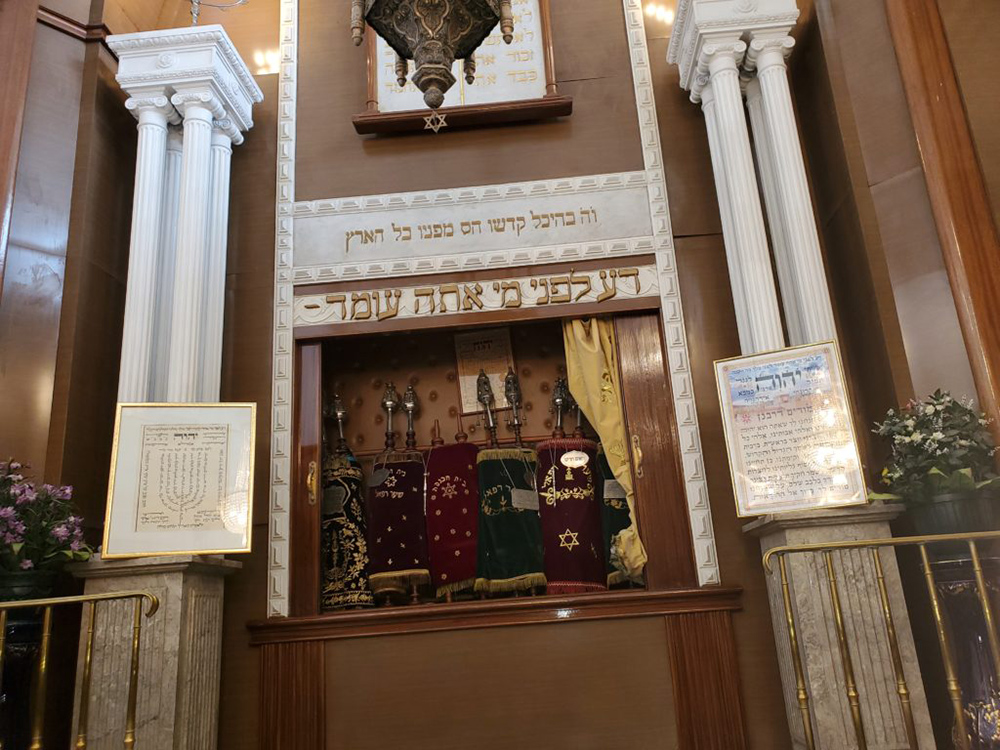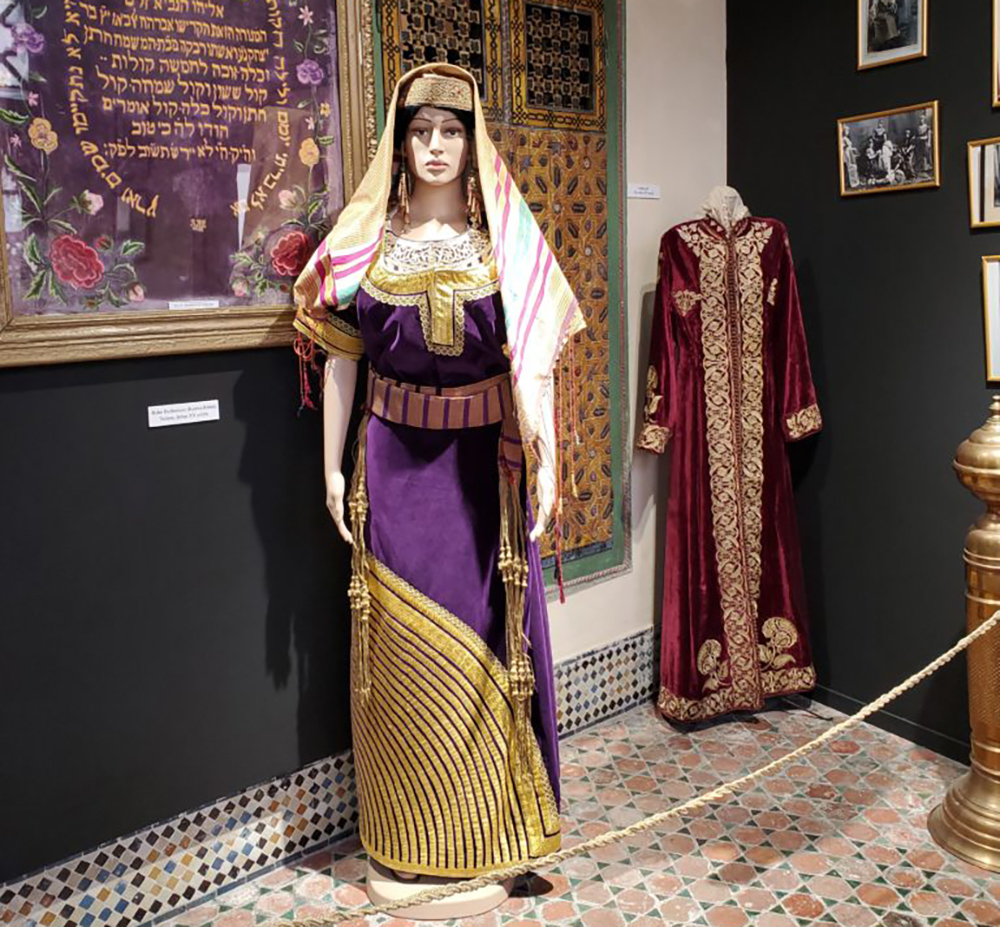By: Meyer Harroch
Tangier is a mixture of North Africa, Spain, Portugal, and France. it is the ideal melting pot and has a rich Jewish history. This beautiful city, only 35 minutes from Spain by hydrofoil or two hours by normal ferry boat service, is a multicultural society, predominantly Muslim, but with small Christian and Jewish communities who have had peaceful relations. In the 1950s, it was a place – and sometimes a refuge – for many artists and writers from America and Europe.
This port city that is shaped by the sea has attracted famous literary figures including Paul Bowles, Tennessee Williams, and Truman Capote and other writers, poets, and artists, such as Jack Kerouac, Allen Ginsberg, and Brion Gysin. Notable painters who lived in Tangier included Eugene Delacroix and Henri Matisse. Judaism has played an important part in Tangier’s cultural heritage, with Jewish settlers originally migrating to the city after the destruction of the First Temple in Jerusalem. Today, Tangier’s Jewish community consists of about 60 Jews, down from a peak of 22,000, many of them having emigrated to places such as Canada, Lisbon, and New York.
The Al Boraq is the first superfast bullet train of its kind in Africa, running along the Atlantic coast for 200 kilometers between the port of Tangier and the commercial hub of Casablanca. These high-speed trains with double-decker cars take about two hours and 10 minutes to reach Tangier with a speed of 320 kilometers per hour (200 mph) and have a capacity for 533 passengers. The amazing Moroccan interior features art deco lamps and spacious seats facing each other that are covered in a rich red fabric. There’s a large set of racks to stow your luggage and a helpful sign tells passengers all the times for both regular and high-speed trains. The seats are accompanied by much roomier tables than you’d typically find on an airplane. Plans call for service extending to major tourist hubs such as Agadir and Marrakech.

Moise Nahon Synagogue
At one time there were over 20 synagogues in Tangier. The Nahon Synagogue, also called “Masat Moshe,” offers a fascinating look at one of them. Located on Rue Synagogue in the Medina, it was constructed in the 19th century by Moise Nahon, a prominent educator, and scholar from an influential Jewish family. The synagogue ceased activity in the second half of the 20th century and fell into disrepair until its restoration in 1994. It now functions as a museum.
The prayer room is accessible via a small courtyard at the end of the entrance corridor. The inside is well kept, and beautifully decorated with silver candelabras and lamps in an Andalusian style. An impressive wooden Torah ark and panels above it are decorated with Hebrew calligraphy, and many silver chandeliers hanging from the high ceiling were donated by former members to remember their loved ones. The upper gallery is used as an exhibition hall of Jewish relics, showing the community’s Ketubas, tapestries, wedding agreement, handmade embroidery, and also other artifacts used for prayers. Perhaps most remarkable is the Arabic calligraphy repeated in three medallions vertically aligned below the superior lobe. Under this decoration, the lower portion of the wall is lined with rectangular, carved wood panels. The center of the prayer hall opens to a ceiling that is also decorated, with a large skylight in the center. Today this synagogue is only used for celebrations such as anniversaries and bar and bat mitzvahs.
The smaller of the two synagogues in the medina, Synagogue Rabbi Akiba was constructed in the mid-19th century and was rebuilt in 1912. More recently it has been converted into a museum highlighting Tangier’s Jewish history.
Chaar Rafael is one of the last surviving synagogues and remnants of Tangier’s Jewish heritage. Located on 27 Boulevard Pasteur in the newer part of the city, this Jewish-owned villa was built in 1919, and it was converted to a synagogue in 1954 when the owner, Raphaël Bendriahm, died. The current rabbi is Jacob Tordgman, who has been with the community for 10 years. The rabbi is also a lawyer who is fluent in French and Arabic before learning Spanish in order to communicate with his congregants Today, only some 10 to 15 people attend Shabbat services, with more tourists and visitors coming for the High Holidays.
Tangier Cemetery: Beth Hahayim
The Jewish Cemetery in Tangier referred to as the “old cemetery,” was in operation already in the 1910s. It has 1,000 graves, mostly white stones, some of which date back to the 16th century. There are many righteous individuals buried there. Owned by the Tangier municipality, the Jewish Cemetery, just outside the Medina, is open to the public and has caretakers who oversee it. While the cemetery has had a combination of erosion and water issues, the inscriptions on the tombstones have been digitized to offer those interested the opportunity to locate a gravesite online. The tombstones are in Hebrew, Spanish, Portuguese and French, with the most recent burials dating back to 1935-40.

Tangier American Legation Museum.
Located within the hustle of the Medina, this museum adds a somewhat foreign feel to the city. This museum, based in an elegant five-story mansion, also played an instrumental role in the Allied landings in North Africa in 1942, known as Operation Torch. During World War II, J. Rives Childs, the head of the U.S. legation, helped 1,200 Hungarian Jews escape the Holocaust with visas to Spanish Morocco. President Harry Truman presented Childs with the Medal of Freedom in 1946 to honor his service. It is not widely known that Morocco was the first country to recognize the United States as an independent nation after the Revolutionary War. The Tangier American Legation Institute for Moroccan Studies, or TALIM for short, was the only U.S. Historic Landmark on foreign soil and the first structure owned by the U.S. government abroad. TALIM was originally gifted to the United States by Sultan Moulay Suleiman of Morocco in 1821. The building, which originally functioned as the U.S. consulate, and has served as a symbol of American engagement with the Muslim world ever since.
The museum also holds an impressive display of paintings that give a view of Tangier’s past through the eyes of its artists, most notably Scotsman James McBey’s painting of his servant girl, Zohra, which has been called the Moroccan Mona Lisa. There is a small bookshop and a wing dedicated to American author Paul Bowles. A hidden gem is a temporary exhibit, “Customs and Costumes of Sephardic Morocco,” a private collection of Berber/Jewish artifacts and featuring the bridal gowns and dresses of Sophia Cohen Azagury. TALIM also houses an 8,000-volume research library that operates a long-standing women’s literacy program and is looking to expand English language lessons for local children and students.




